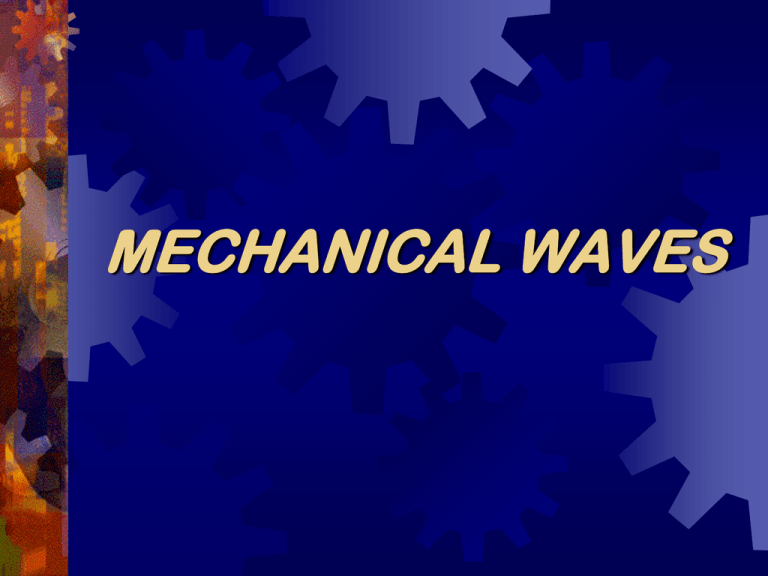MECHANICAL WAVES
advertisement

MECHANICAL WAVES What are waves? A wave is a disturbance that carries energy through matter and space. The matter through which waves move through is called a MEDIUM. It can be a solid, liquid or gas. Mechanical Waves Waves that require a medium are called mechanical waves. Nearly all waves are mechanical waves. Ex: ocean waves, sound waves and seismic waves (earthquakes) Electromagnetic Waves are NOT mechanical waves, so they do not need a medium to travel through! Energy moving through a medium •The picture above shows a medium made up of particles connected by springs. • As one individual particle is disturbed, it transfers the energy from that particle to the next and so on. • So… energy is transported from one end of the medium to the other end of the medium without transporting any actual matter! •Ex: Like being in the ocean and a wave picks you up and puts you down as it passes by. •Or Dominoes falling into each other How mechanical waves move through matter… The kind of medium, (solid, liquid, gas) determines the mechanical wave speed. Waves rely on the elasticity and inertia properties of the medium. Basically how are the particles moving in the medium? Which medium do mechanical waves travel faster in, solids, liquids or gases? (*hint* think about molecules) How mechanical waves move through matter… Solid mediums! Because.. in solids and liquids the molecules are more closely packed together than gases, so energy is transferred from one particle to another particle faster. So which medium do mechanical waves travel through the slowest? Gases! Because… the particles are moving rapidly and randomly it is hard for the particles to transfer the energy to one another! Faster than the Speed of Sound! In the air, sound will generally travel 300 meters per second. In the liquids, sound will generally travel 1500 meters per second. In the solids, sound will generally travel 2500 meters per second. Breaking the Sound Barrier Motion of molecules in a mechanical wave Think of a wave created by fans in a baseball stadium and how the molecules move in a set pattern. Molecules dealing with kinetic energy, have random motion, like gases. Less energy is transferred. Uses of Mechanical waves Ultrasound pictures Testing buildings and structures for defects Geologists use mechanical waves to detect the epicenter of earthquakes and to explore the earth’s crust and mantle. What are epicenters? Epicenter is the point on the Earth’s surface where an earthquakes starts. Focus is the point in the earth where an earth quake starts. Detecting the Epicenters Very Dense Layer Ultrasound Picture New 3D Ultrasound Picture Using waves to detect defects in man-made structures. Break in the rail line









